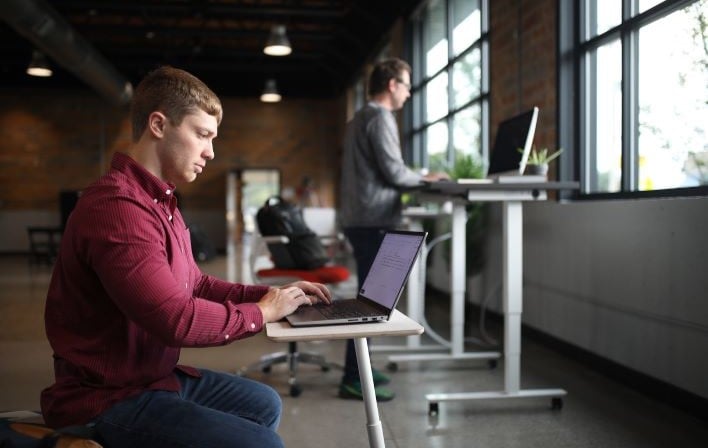
A long-term study monitoring health impacts of 83,000 adults have definitely found that standing desks per se might not be all they’re cracked up to be. Following years of scientists (and standing desk advocates) warning on the harms of sitting, this new study comes as a shocker. Don’t worry though, there’s no need to offload those expensive standing desks on Craigslist—the solution is actually an obvious no-brainer.
A group of researchers in Australia recently reported that standing—compared to sitting—may not be more beneficial for reducing cardiovascular disease (CVD) and orthostatic circulatory disease incidences. The main driving point of the findings (published in the International Journal of Epidemiology, part of the Oxford University Press) is that time spent being stationary without intentional and active movement is linked to higher health risks.
The 6.9-year long study involving more than 83,000 participants took a detailed holistic look at time daily time spent sitting and standing (using a wearable device), as well as each individual’s health data. The average age involved in the study was 61 years old, with around 55 percent being women.

People in the study spent, on average, about 13 hours each day stationary, of which 11 hours were spent sitting and 2 hours were spent standing. Ultimately, the study found that folks who had a combined standing/sitting time exceeding 12 hours per day had increased risks of circulatory issues, with the risk increasing for every extra hour being stationary. Breaking that down a bit more: circulatory risks increased when people stood for more than two hours of standing or 10 hours of sitting.
In either situation, the researchers concluded that standing doesn’t decrease heart disease or stroke rates and may even increase risks of other issues like varicose veins and deep vein thrombosis.
According to the lead author of the study, Matthew Ahmadi, deputy director of the Wearables Research Hub, “sitting is still bad for you, but standing by itself isn’t the magic pill.” Ahmadi, who’s also a researcher from the Physical Activity, Lifestyle, and Population Health Research group at the University of Sydney, added that “it needs to be mixed in with other forms of activity that actually make you move, because if we want to lower our risk of cardiovascular disease, we have to do activities that actually engage the cardiovascular system.”
In other words, dear readers, it’s time to get off your butts and move around. Incorporate simple workouts during off-camera virtual calls, go on short 10-minute walks, stretch, and contract your leg muscles every 10 minutes or so—the idea is simple: by keeping the body active and blood flowing, you’re helping your body regulate, reduce health risks, and improve spinal posture, among other benefits.